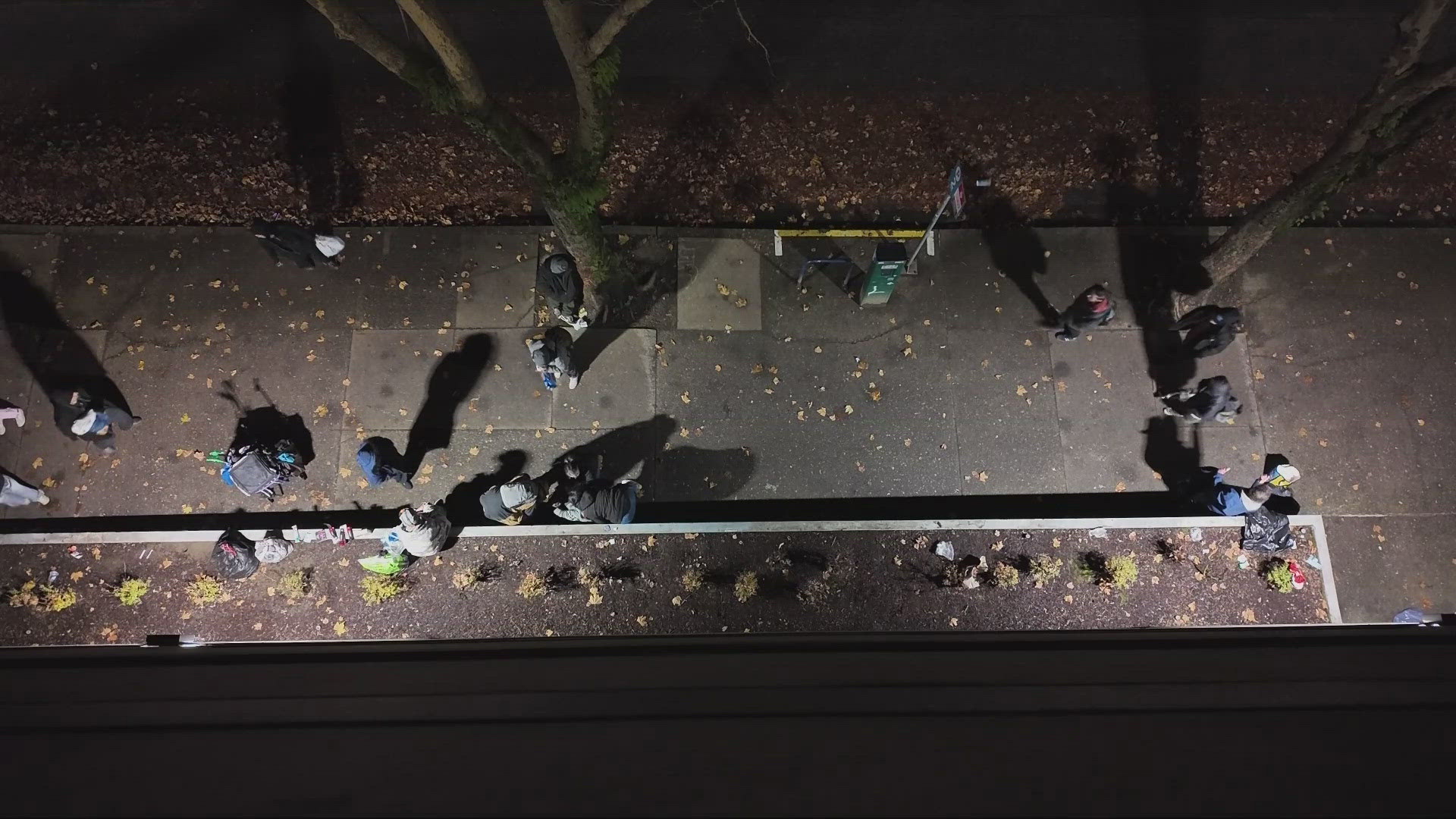PORTLAND, Ore. — As the sun set on downtown Portland one evening, a new but familiar scene in the fentanyl crisis unfolded. Lately, those addicted to the deadly synthetic opioid have congregated in pockets of the Goose Hollow neighborhood. Portland police officers tracked the activity on a map, a telltale sign that dealers were also there.
Inside the Portland Police Bureau's Central Precinct headquarters, officers geared up to face another night working the latest hotspot.
“It's going to be better at 5:30, better at 6:30, just keep going,” Officer Eli Arnold said to his team.
On this night, Officer Arnold was working undercover as a spotter. He started in an unmarked car, using binoculars to catch people buying and selling fentanyl. Less than 10 minutes in, he spotted a deal being made at Southwest 13th Avenue and Yamhill Street, right outside The Portland Clinic.
Administrators for the medical clinic had announced earlier that week that the downtown location would soon close to patient care, due in part to the activity that Arnold was watching take place. Over his radio, Arnold told his team waiting a few blocks away on bikes to arrest two people he believed were selling fentanyl right outside the clinic lobby.
“It’s fetty, fetty row,” said a woman who is homeless and addicted to fentanyl, the drug known on the street as "fetty." She knew one of the dealers that police had just caught. “He's not out here doing terrible things. He's out here doing what he knows to survive."
She watched from across the street as officers searched him. “You have to survive by the moment. So, whatever it takes to get that in that moment is what you're going to do."
Officer Arnold does whatever it takes to stop them. On another night, that meant hiding on the medical clinic’s third-story roof to watch from above.
“We're looking for the crowd reacting to the arrival of a dealer,” he explained. “I've spent a few thousand hours watching these spots like this over the last few years … you get pretty good at it. I’m a few hundred dealers in."
He explained the ebb and flow of dealers and users he calls "circulation" and the importance of knowing what to look for.
“So, this is a dealing area. They'll pass through, especially the higher volume dealers, they'll sort of rapidly supply the group and then they just move. They go on looking for the next. The faster they can deal it out and move, the less their exposure, and the quicker they make their money,” Arnold said.
He watched a man in black clothing accept a large knife from a man in a red beanie. The reflection of the streetlights shone off the blade, bright enough to see from three stories above.
“Another thing you'll see is stolen property being offered for trade … So, sometimes you'll see dealers will be acquiring clothing and stuff over the course of the night. They'll have a pair of jeans over their shoulder and shoes thrown over another shoulder,” Arnold said.
On some nights, he watches from the roof for six hours at a time — and it’s not just drug deals he’s looking for.
After about 10 minutes on the roof, a man dressed in gray appeared to have overdosed on the sidewalk below. Arnold called an ambulance, along with his bike team, to bring Narcan, an opioid overdose reversal drug.
Before the bike officers could arrive, someone on the ground administered Narcan, throwing the man out of his overdose and into instant withdrawal. Only a handful of people reacted to the overdose, a sign of how common they’ve become and for which the dealers seem to have little remorse.
“They’re like, ‘Oh yeah for two bucks I’ll sell you something that might kill you,’” Arnold said.
The overdose pushed the crowd two blocks west toward Lincoln High School and Providence Park. Before long, they were back in front of the clinic.
Arnold watched a man in a navy blue baseball cap open his palm, revealing to the person next to him a pile of powdered fentanyl. Then, he accepted cash for the powder. Arnold saw it all through his binoculars. It was enough proof for him to call in the bike squad, which was waiting nearby. They quickly arrested both men.
Back at police headquarters, Officer Donald Mathew recorded the fentanyl and cash he seized from his recent arrest at Southwest 17th and Yamhill. In total that night, the officers confiscated three guns, 64.5 grams of fentanyl, and $2,395 in cash.
“It's good to get a bust like this, you know,” said Mathew.
It’s why they’re out there, working a mission that only ends once it appears they have confiscated the dealers’ drug supply for the night.
Once arrested, the dealers are placed in a holding cell in Central Precinct. Up until recently, they would be questioned by police, handed a court date and released, which is why Arnold said he would oftentimes spot the same dealer back on the streets not long after he'd arrested them.
“There was one time where a high-volume dealer doing this, (we) caught him and I was still up in the spot and he came back — like he got out of jail fast enough that he showed back up while I was still there, and I've seen him multiple times since,” he said.
Earlier this year, the presiding judge in Multnomah County changed the booking requirements. Those alleged to have committed commercial drug offenses are no longer eligible for release until they appear in court before a judge.

